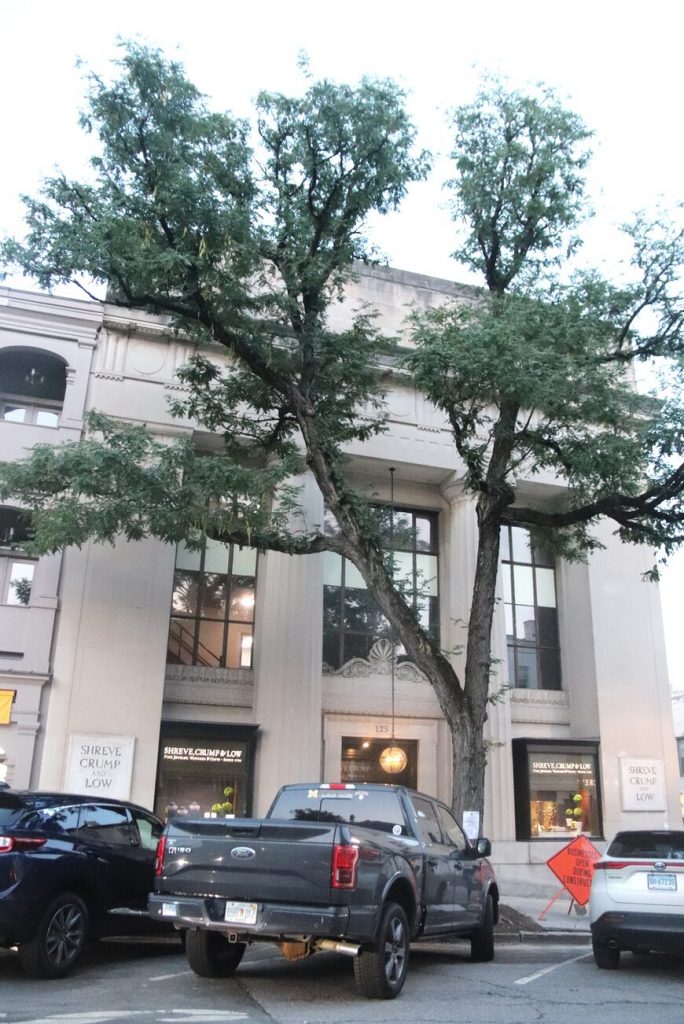By Kate Dzikiewicz
There is growing awareness in Connecticut of the damage caused by invasive plants, yet many homeowners, landscapers, and gardeners remain unaware of the serious threat posed by English ivy. Long valued as a low-maintenance and attractive ground cover, English ivy grows quickly, thrives in a wide range of conditions, stays green through winter, and adds a sense of elegance to landscapes. Ironically, these same traits make it especially destructive when left unchecked.
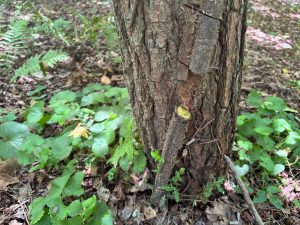
Like other ivies, English ivy is a vigorous climber. Its vine roots secrete a glue-like substance that allows it to cling tightly to bricks, stone, trees, and other surfaces. On buildings, ivy traps moisture, loosens masonry, and accelerates structural decay. However, on trees the harm can be far worse.
Unlike native vines like poison ivy, which typically coexist with trees, English ivy can overwhelm trees in yards or natural spaces. It forms thick woody stems that can reach a foot in diameter. The added weight from English ivy vines dramatically increases the risk of lost branches during snow or storm events. As it climbs, the ivy shades out leaves, causing branches to die and decreasing the tree’s overall health and vitality. Property owners may first notice dieback in lower branches, but over time, the entire canopy can be compromised.
This decline often goes unnoticed because it happens slowly, sometimes over many years. By the time the damage is obvious, the tree may already be beyond saving. This is why it is critical to intervene early. When ivy is just beginning to spread on the ground or at the base of a tree, it can be pulled by hand. Once vines have adhered to bark, however, more care is needed. Pulling vines that are strongly attached will damage the bark of a tree and can increase the risk of infection.
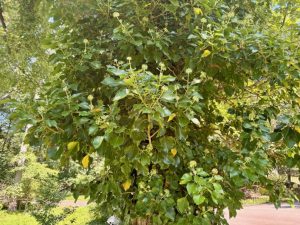
The safest method for removing English ivy from trees, especially larger vines, is to cut the stem close to the ground. Then, make a second cut six to twelve inches higher and remove that section of vine. Growth above this point will die and eventually fall away naturally. Applying herbicide to the rooted stem can provide extra assurance that the ivy will not resprout. Though dying ivy clinging to a tree may be unsightly for a season, it is the best way to ensure the tree’s long-term survival.
Because birds eat English ivy berries and spread the seeds through their droppings, it can appear even where it has never been planted. For this reason, it’s wise to regularly check your yard, garden, or nearby woodland for its telltale vines. In Fairfield County, several local organizations actively cut back ivy in parks and forests to protect our community trees.
Although English ivy is still legal to purchase in Connecticut, we strongly recommend homeowners and businesses choose alternatives. Many beautiful, low-maintenance ground covers exist that provide the same lush look without threatening the health of trees or the integrity of buildings. English ivy may be traditional, but it comes at too high a cost.
Kate Dzikiewicz
Executive Director, Tree Conservancy
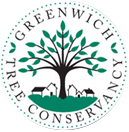

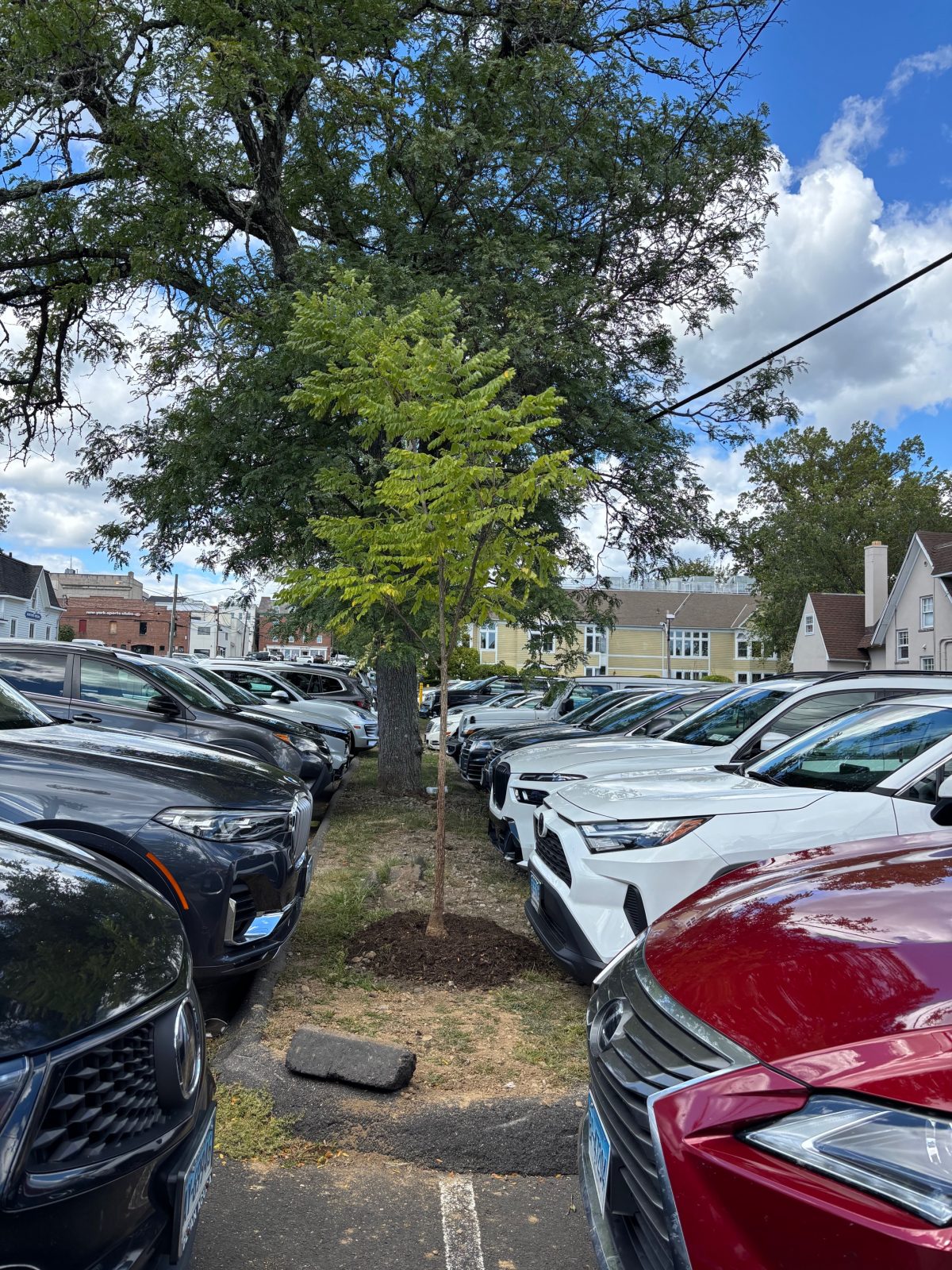
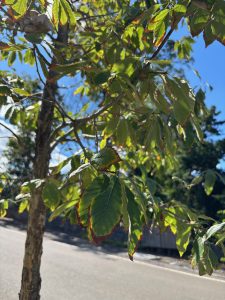
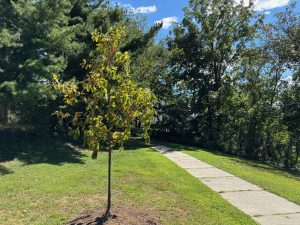



 Beyond his professional accomplishments, Conte has been highly involved in the Greenwich community for many years. He has previously served on the boards of the Greenwich Land Trust, Greenwich Audubon, and Family Centers Inc, and has extensive leadership experience as president of the board of the Round Hill Association and Greenwich Green & Clean.
Beyond his professional accomplishments, Conte has been highly involved in the Greenwich community for many years. He has previously served on the boards of the Greenwich Land Trust, Greenwich Audubon, and Family Centers Inc, and has extensive leadership experience as president of the board of the Round Hill Association and Greenwich Green & Clean.

